A dining table or a kitchen countertop feels incomplete without a fruit bowl.
Why?
Fruits add variety to your diet, providing the minerals and vitamins needed to promote physical and mental health.
Moreover, fruits make tables more colorful and attractive. A mixture of red, yellow, orange, green, and other vibrant hues guarantees enjoyable mealtimes.
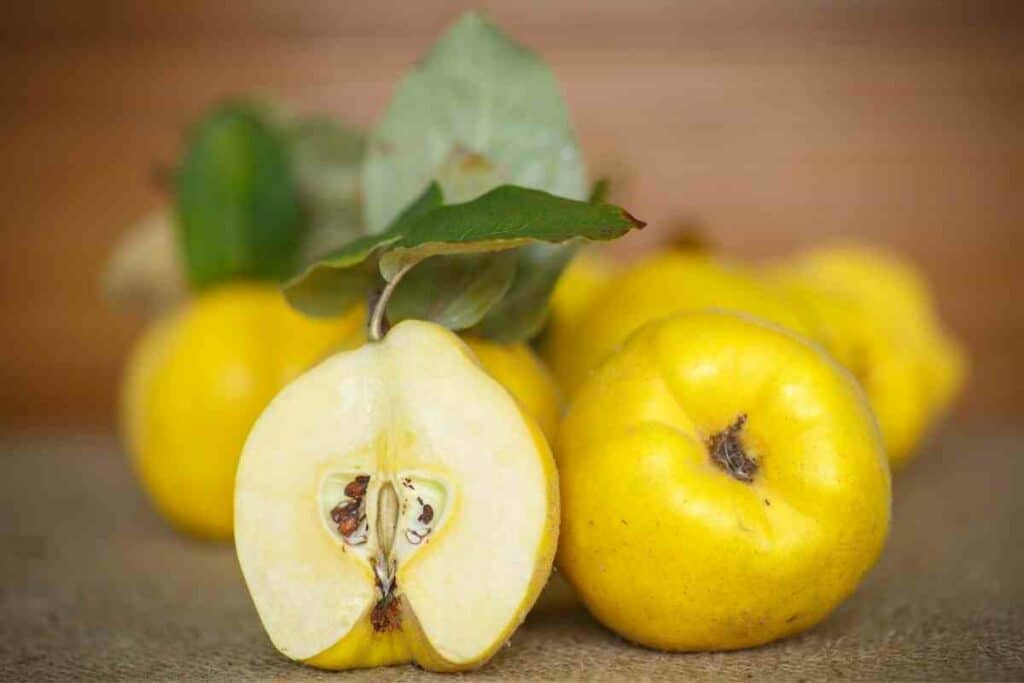
Yellow fruits increase your appetite because the color signifies happiness. Specifically, the brain secretes the feel-good hormone (serotonin) when you see yellow.
For This Reason – It’s wise to include a few yellow fruits in your fruit bowl. Here are some yellow fruits to supplement your diet.
1. Bananas
Bananas are arguably the most popular yellow fruits.
Archaeologists believe that it’s one of the earliest cultivated fruits, with evidence dating back to 8000 B.C. in New Guinea.
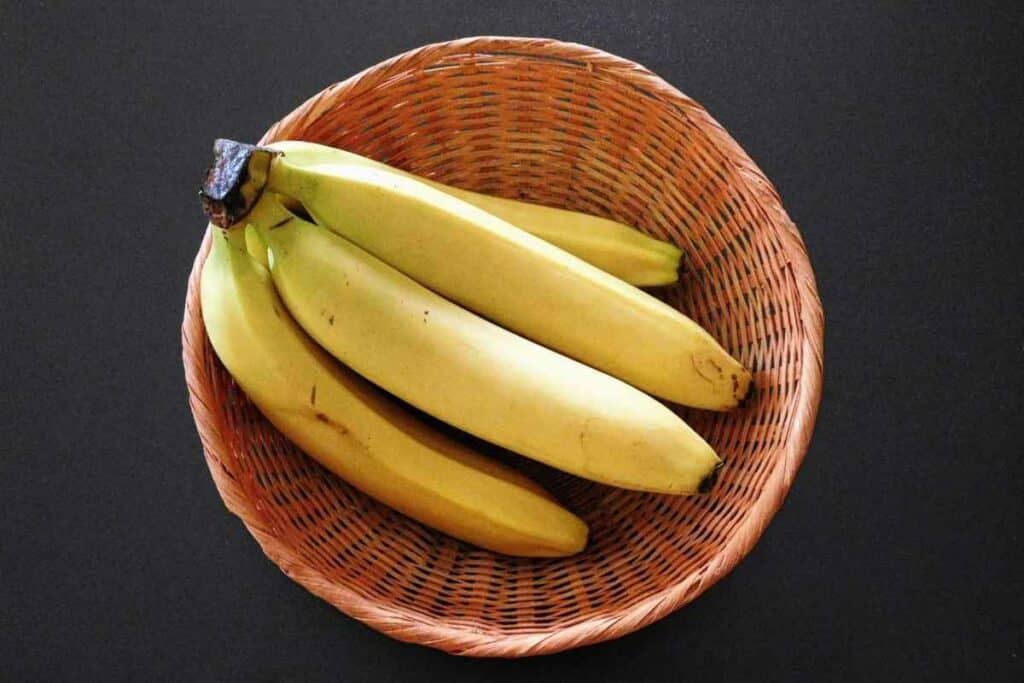
Bananas are useful in improving physical and mental health:
- The fruits contain tryptophan, an essential amino acid that stimulates the secretion of melatonin and serotonin. These ease the symptoms of anxiety, depression, and insomnia.
- Consuming bananas can help you lose weight. Each finger has 30g of carbohydrates and 3g of dietary fiber, which keeps you full for hours. Moreover, the sugary taste allows you to curb your cravings.
Scientists encourage athletes to abandon sports drinks for water and bananas.
Both guarantee the same performance output, but those who eat bananas recover better.
Besides serotonin, bananas stimulate dopamine production, which helps relieve oxidative stress.
Although bananas are relatively harmless, you shouldn’t eat more than 5 daily. Overeating makes you sleepy. The sugar can also affect your dental health.
2. Papaya
Papayas, also called pawpaws, are native to the tropics.
Unlike in the past, the fruits are now available throughout the year.

Papayas are famous for their sweetness, vibrant color, versatility, and health benefits.
The potential health benefits of eating papaya include:
- improved digestion and gut health
- faster wound healing
- better blood sugar control
- reduced risk of cancer, diabetes, and heart disease
Furthermore, papayas are soft and fleshy, making them a perfect addition to many recipes.
For instance, you can make a tropical fruit salad using mangoes, papayas, and pineapples.
You can use papayas to add a fruity flavor to iced tea, lemonade, or water.
Alternatively, you can add frozen papaya to your smoothie.
Heads Up! If you have a latex allergy, please avoid eating papaya because it contains chitinase enzyme. This enzyme triggers a cross-reaction between latex and the foods containing it.
Some people find the smell of ripe papaya unpleasant. You can neutralize the odor by mixing papaya with lime juice.
3. Guava
Guavas are tropical trees native to central and northern South America.
They produce oval fruits with a light green to yellow skin and edible seeds.
The plant’s leaves can be used to make tea, and their extract has several medicinal properties.
Guava fruits are rich in antioxidants, fiber, minerals, and vitamins.
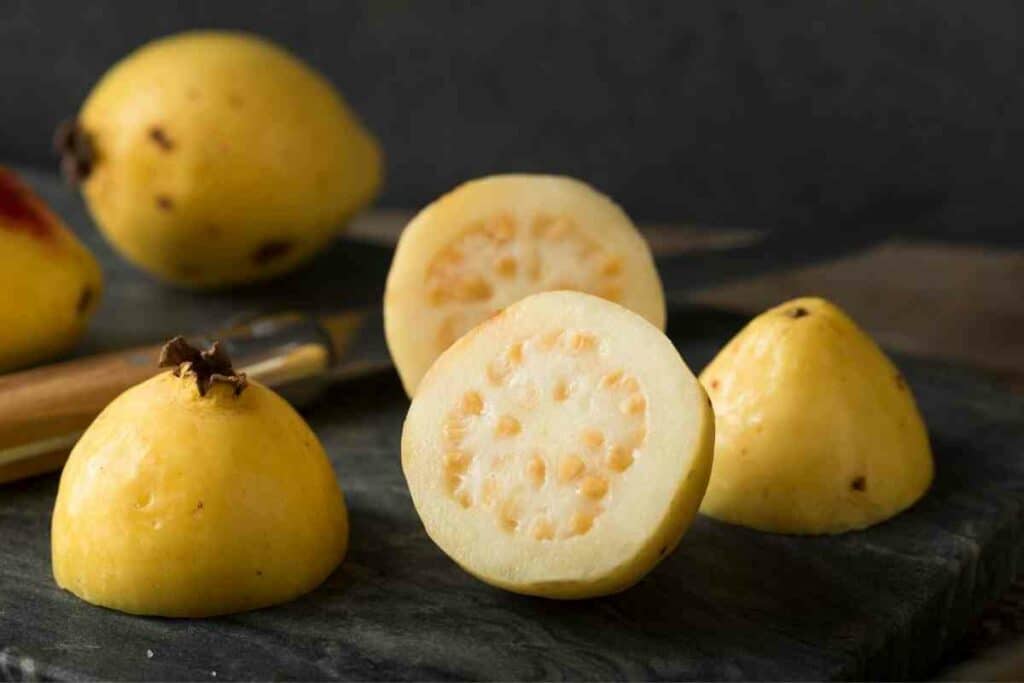
Antioxidants such as lycopene, quercetin, and other polyphenols combine with vitamin C to neutralize free radicals, thereby reducing cancer risk.
The high fiber content helps with diabetes prevention and blood sugar regulation.
Most people eat the fruit sliced or unsliced. Others prefer adding it to yogurt, while others blend it into smoothies. Regardless, it leaves a sweet flavor in your mouth.
The guava fruit doesn’t have known side effects.
However, pregnant and lactating women should consult a doctor before taking guava leaf juice. The same applies to people under specific medical prescriptions.
4. Pineapple
Pineapples are classic tropical fruits named after their shape, which resembles a pine cone.
When ripe, pineapples are sweet, tasting like a blend of apples and citrus fruits.
The rough skin makes it difficult to tell a fruit’s condition. However, color, smell, and texture can help you make the right choice.
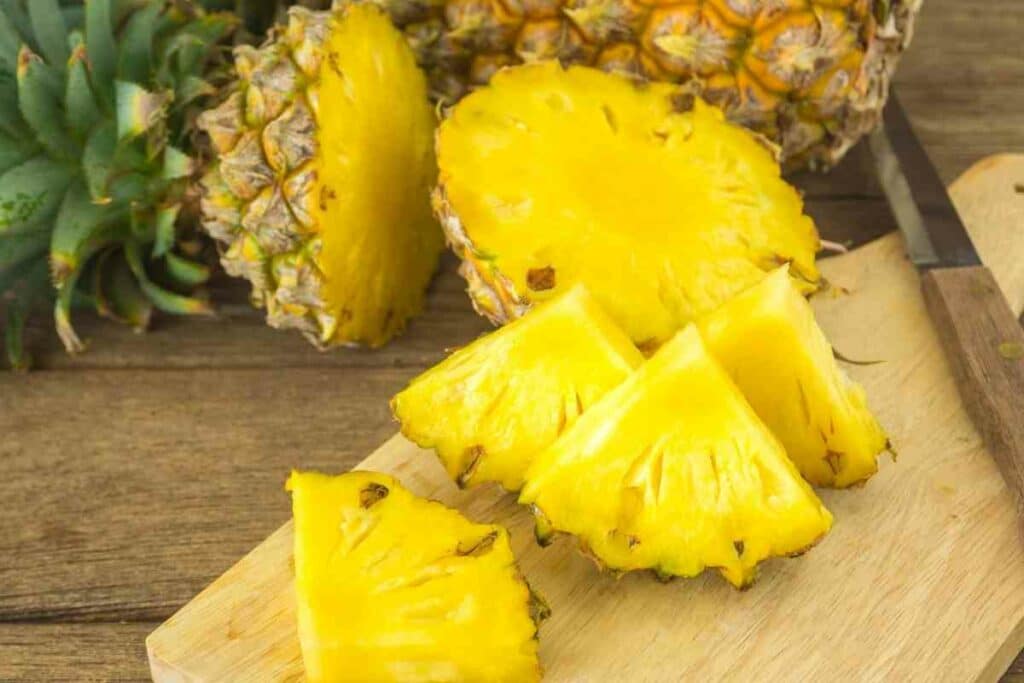
Upon maturity, pineapples have firm green skins. They gradually change to yellow as they ripen.
During this period, the fruit produces a pleasantly fruity scent. When ready to eat, the skin gives in slightly under pressure.
Pineapples have several components that improve overall health. Some benefits of consuming the fruit include better digestion, improved immunity, and quicker recovery after surgery.
Moreover, antioxidants lower the risk of:
- certain cancers
- diabetes
- and heart disease
Fresh pineapple fruit is easily accessible in grocery stores throughout the year. You can also consume it canned, dehydrated, or frozen. Besides, you can add fruit to pizzas, salads, and smoothies.
Unless you’re allergic, eating pineapples is harmless. However, diabetic patients should observe their intake to avoid destabilizing blood sugar levels.
Overeating pineapples might have adverse effects. The fruit contains bromelain, a compound that affects blood clotting.
Bromelain also causes tongue burning and itching in sensitive people. Sometimes, it causes nausea and diarrhea, especially if you consume unripe pineapples.
5. Apricot
The Apricot is a fruit tree in the rose family.
It thrives in temperate climates but is especially popular in the Mediterranean. Apricots share a lot with almonds, cherries, peaches, and plums.
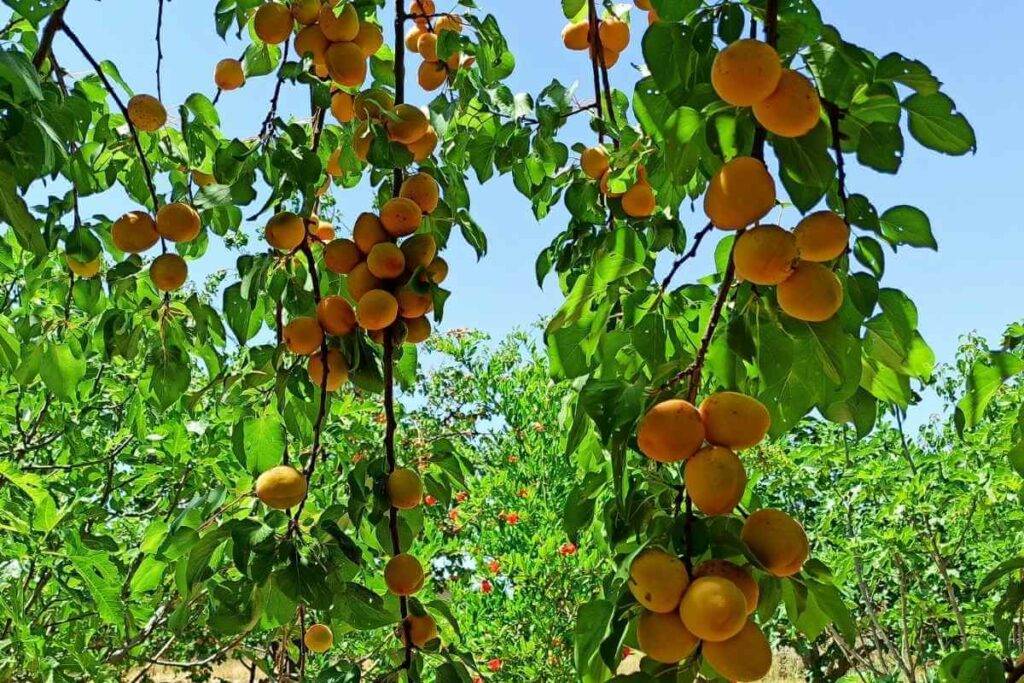
Like most fruits, apricots are rich in vitamins and minerals and are a great addition to a healthy diet. They are an excellent vitamin C source, one of the vitamins your body cannot produce.
This vitamin is an oxidant that lowers cancer risk by eliminating free radicals. It’s also useful for making collagen for repairing wounds.
Additionally – Apricots are among the best sources of potassium. Potassium improves nerve function and muscle contraction. It’s also helpful in transporting nutrients to the cells and excreting cellular waste.
You can eat the fruit raw without notable side effects. When eating, wash the fruit, slice, and remove the stone.
Alternatively, you can consume the fruit dried or frozen. Dried apricots add flavor to yogurt, smoothies, and porridge.
Apricots are safe, provided you don’t overeat.
However, you must avoid ingesting the seed. It contains amygdalin, a precursor to the toxic cyanide. Eating the seed causes nausea, vomiting, and diarrhea. In severe cases, it can cause death.
6. Barhi Dates
Barhi is a popular date type with thick flesh and a pleasant taste.
It’s sweeter when eaten fresh than dried –many consider it the sweetest and creamiest fruit in the date palm family.
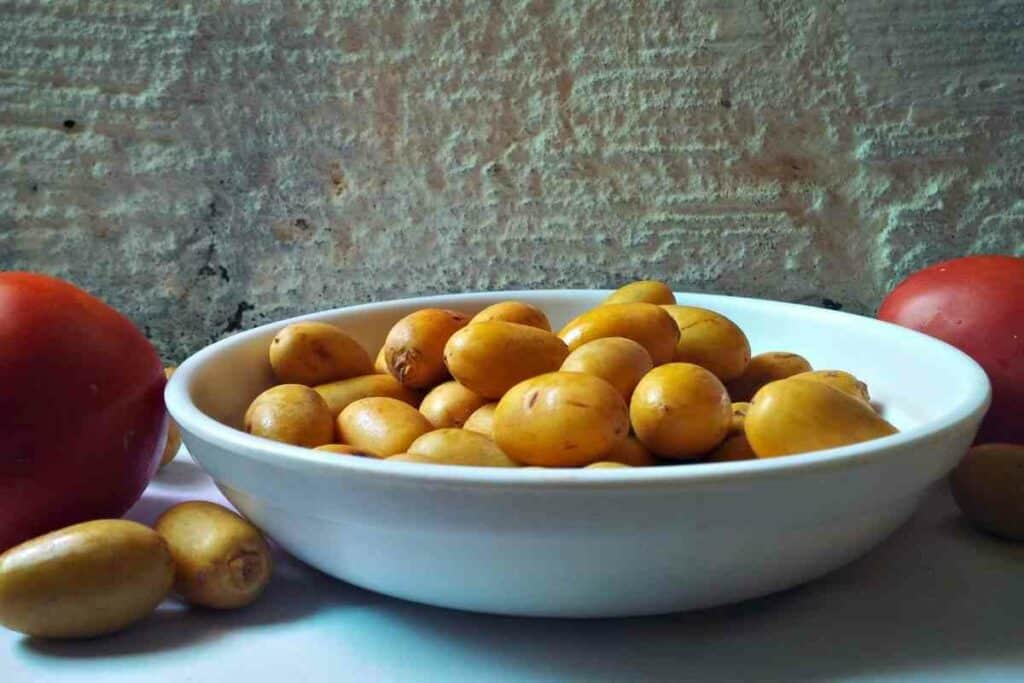
However, the sweetness varies with ripeness; the ripest dates taste like butterscotch, while the freshly ripe taste like fresh sugarcane.
Barhi dates are smaller than other data types. They’re also rounder and remain attached to the vine when mature.
Yellow Barhi dates have a golden matte appearance and a crunchy texture. They taste like sugarcane. As the fruit ripens, it assumes a brown color and a softer texture.
Regarding Nutrients – Barhi dates are rich in dietary fiber, which promotes gut health. They also have potassium and manganese, which balance fluid levels and encourage connective tissue development.
Due to their high caloric content, you should observe your date consumption habits.
Overeating these fruits increases blood sugar levels, putting you at risk of heart disease and hypertension.
If you have kidney disease, please avoid eating dates, as they contain a lot of potassium. Asthmatic people can also experience increased wheezing after taking dates.
7. Eggfruit
Eggfruit is a tropical fruit tree native to Mexico.
It also grows in other parts of Central and South America, Southeast Asia, and the Caribbean. Generally, the plant favors hot climates.
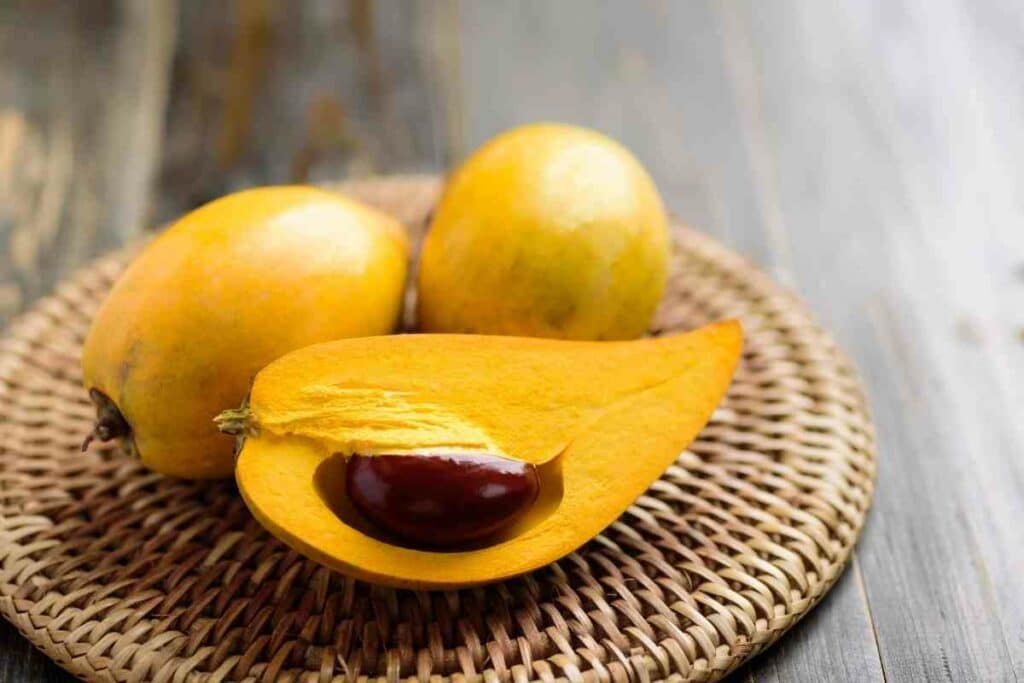
When ripe, the fruit looks like a boiled egg yolk, explaining the name. The fruit’s shape varies depending on the cultivar – it can be round, heart-shaped, or oblong.
To eat the fruit fresh, pull it apart with your fingers. You can also cut with a knife and use a spoon to scoop the pulp.
Alternatively, you can blend the pulp into smoothies or use it to make purées and pudding. It also adds flavor to pastries like bread, muffins, and pies.
Eggfruit is rich in beta-carotene, which improves vision.
It also has abundant minerals like iron and calcium, aiding red blood cell production and strengthening bone. The pulp is an excellent source of dietary fiber.
8. Golden Kiwi
The golden kiwi, also called yellow kiwi, is a kiwifruit variant developed by Zespri International, a New Zealand company.
It’s an independent species that belongs to the same genus as the green kiwifruit.
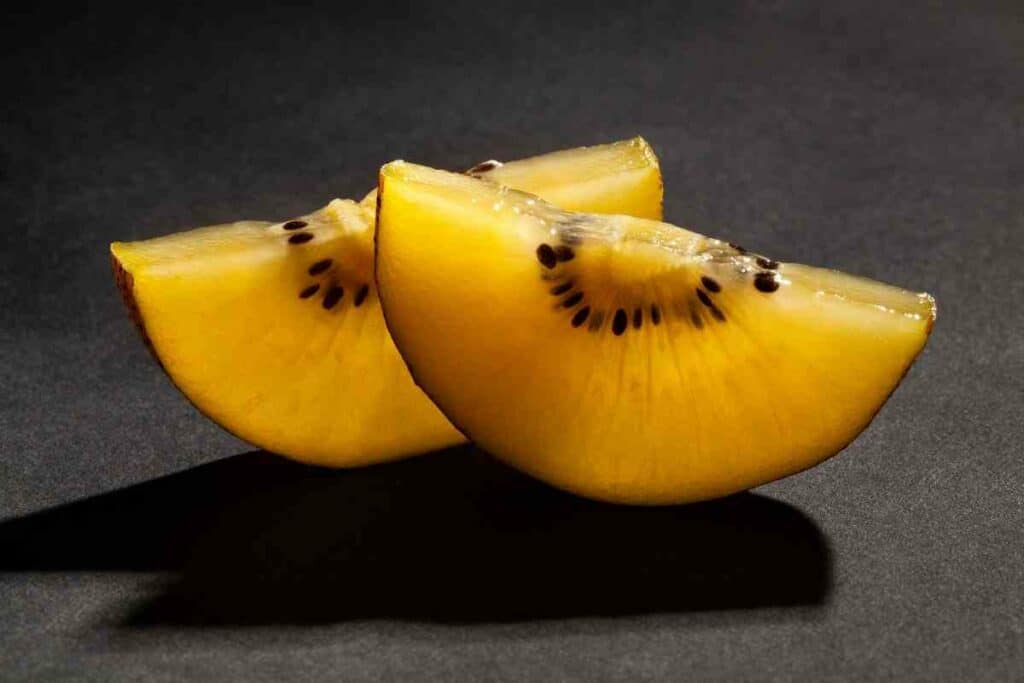
However, the golden kiwi is softer than the green kiwifruit inside and outside. The color is also different.
Moreover, the golden kiwi is sweeter than the green variant. Regarding size, the two are similar.
Golden kiwis are rich in:
- dietary fiber
- folate
- and vitamin C
Consuming this fruit reduces the risk of malnutrition and other health problems. It also suppresses and kills cancerous cells.
Kiwis are safe for most people if consumed in the right amounts. If you’re allergic to the fruit, you might experience trouble swallowing it.
9. Lemon
Lemons are mostly used in small quantities to blend juices and add flavor to food.
Many people don’t like eating plain lemons due to their intense, sour taste. Regardless, they’re a popular fruit worldwide.

The flavonoids in lemon can lower the risk of ischemic stroke in females.
Ischemic stroke is the most common stroke that occurs when a blood clot prevents oxygenated blood from reaching the brain.
Always Good Idea – You can also use lemons to make lemon water. Substituting juices and sodas for lemon water reduces your sugar intake and improves health. Drinking a lot of lemon water also prevents dehydration.
Unlike other fruits, lemons don’t ripen or become better after picking. Instead, they deteriorate.
The best way to preserve lemons is to keep them in a cool, dry place, away from direct sunlight.
Lemons have no significant side effects.
However, they have acidic juices that can cause mouth ulcers and gastroesophageal reflux disease (GERD) symptoms, such as heartburn, belching, and regurgitation.
10. Loquat
Loquat is a fruit tree native to China that belongs to the rose family.
Although it’s primarily grown for its fruit, the leaves are also valuable.
The fruits are small, round, and grow in clusters. Most are yellow, but some varieties produce red and orange fruits.
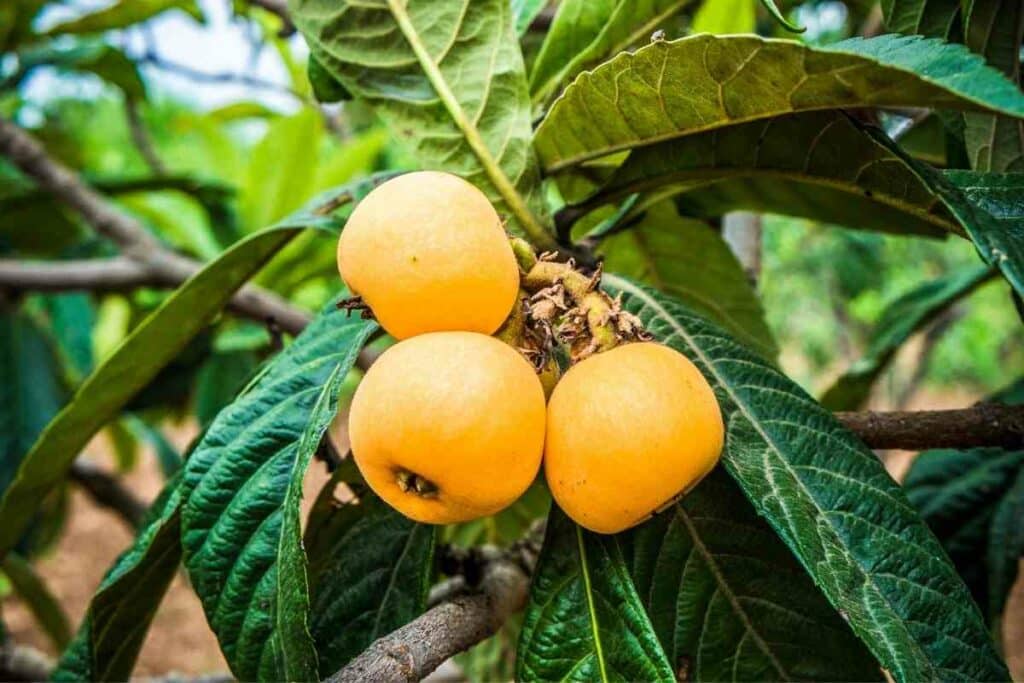
The entire loquat tree has potent compounds with medicinal value.
The fruits have carotenoids and flavonoids, antioxidants that reduce the risk of chronic illnesses like heart disease and cancer. The leaves are useful in making herbal tea.
You can consume the fruits in many forms.
These include an extract, a snack, a supplement, or a tea. If eating it whole, you can peel the skin or cut the fruit and eat around the skin.
Eating too many loquats can trigger adverse reactions in allergic people. However, most of them are mild. In severe cases, it can cause anaphylaxis.
For This Reason – It’s wise to consult a doctor before taking loquats. Never swallow loquat seeds, as they’re poisonous.
11. Mango
Like bananas, mangoes are popular and one of the earliest cultivated fruit trees.
The species has existed for over 4,000 years.
Several mango types exist, each with a unique shape, size, and taste. Due to its adaptability, some refer to mangoes as the ‘king of fruits.’
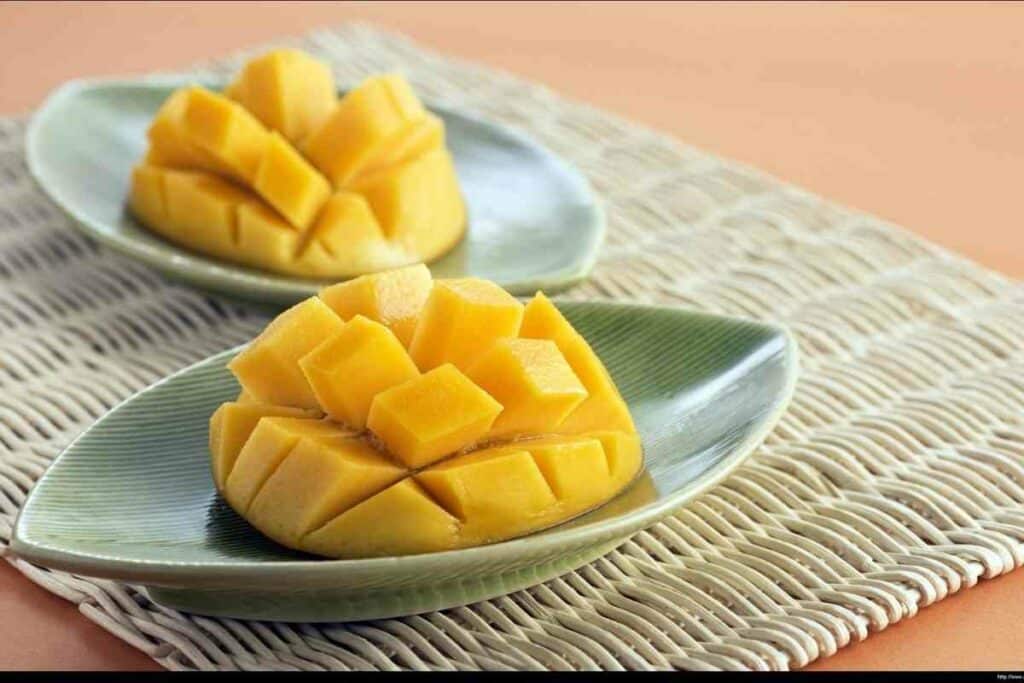
Besides sweetness, mangoes have a high nutritional value. They have several vitamins and minerals that boost immunity and improve overall health.
Another benefit of mangoes is their low caloric content. One cup has less than 100 calories, which is lower than other food types of similar quantity.
This low-calorie density makes mangoes ideal for those looking to reduce caloric intake while feeling satiated.
Furthermore, mangoes have:
- digestive enzymes
- dietary fiber
- water
- and other compounds that improve gastrointestinal health
Mangoes are delicious fruits that you can enjoy in many ways. You can eat the whole fruit, use it in salads, or blend it into juices.
That said, overconsumption increases blood sugar levels. Enjoy your mangoes in moderation.
12. Grapefruit
Grapefruit is famous for its contrasting bitter-sweet taste.
The fruit is versatile – you can use it in salads, fruit medley, and recipes. More importantly, the fruit has rich nutritional value.
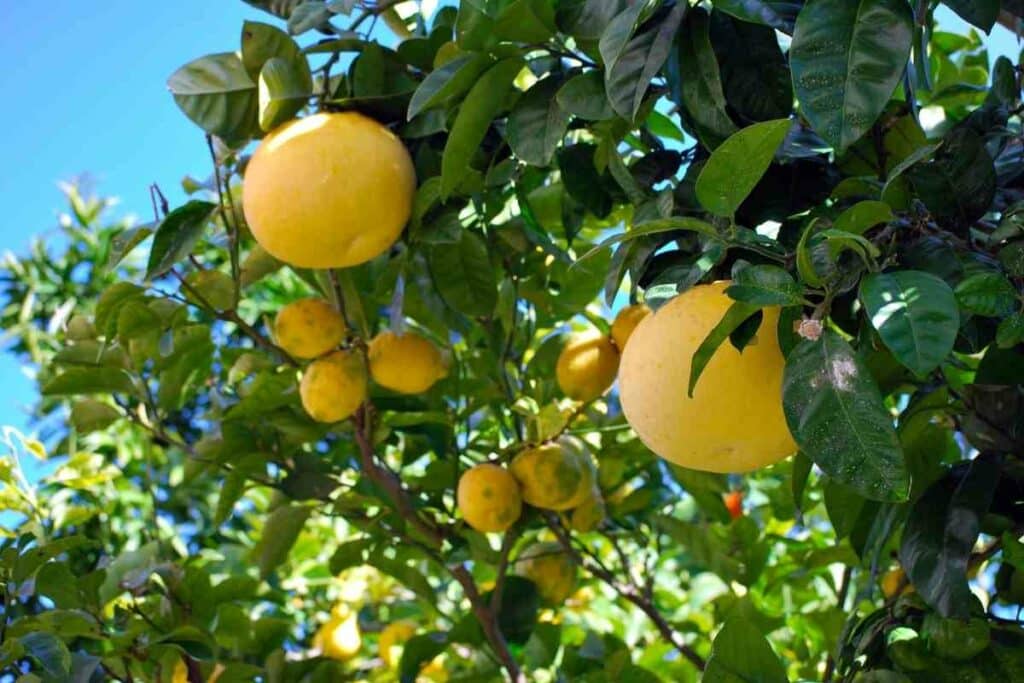
With 92% water, grapefruit is one of the fruits with the highest water content. Consuming grapefruit improves your overall well-being.
Remember, all body processes and systems need water, and proper hydration enhances the efficiency of bodily functions.
Although grapefruit juice provides some of the fruit’s benefits, it lacks fiber.
The juicing process eliminates pectin and rind, which are vital to digestion. So, it’s better to consume the whole fruit.
It’s worth noting that grapefruit and its derivatives can interact with certain medications because they contain an enzyme that blocks their activity.
Some drugs that interact negatively with grapefruit include:
- antihistamines
- anxiety medication
- blood thinners
- hypertension medications
- organ transplant drugs
- and some corticosteroids
Sometimes, grapefruit can interact with contraceptives. While it doesn’t make them ineffective, it increases the risk of adverse effects like breast tenderness and nausea.
13. Quince
Quince is an unpopular fruit related to apples and pears.
A member of the rose family, it’s the only species in the genus Cydonia.
The fruit is yellow and resembles pears, though its bumps are more prominent.
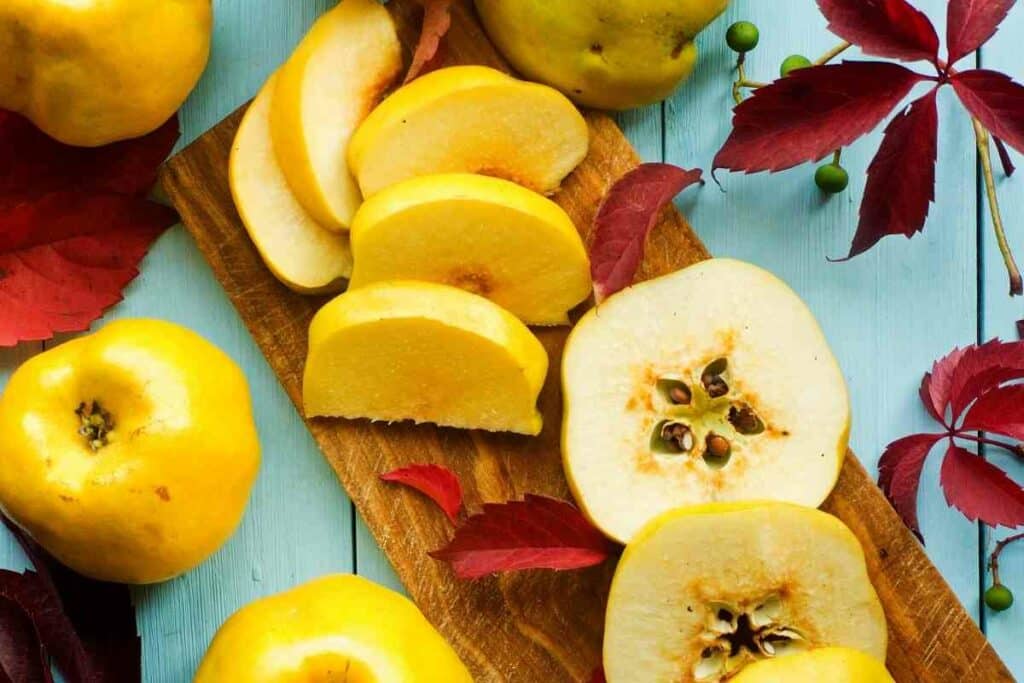
You shouldn’t confuse quinces with flowering quinces. These two bear similar fruits, but the latter is a shrub.
Quinces are rare – finding fresh fruit at your local grocery isn’t easy. You might fail to get it at a regular farmers’ market.
If lucky, you can get the plant’s derivatives, such as pastes and sauces. You can also find quinces in markets specializing in uncommon fruits and vegetables.
The health benefits of quince include:
- reducing cancer risk
- aiding in weight loss
- reducing cholesterol
- improving gut health
- and boosting immunity
Quince also soothes inflammation, prevents allergic reactions, and promotes healthy circulation.
There are no known cases regarding the side effects of consuming quince fruit. However, quince seeds contain traces of cyanide. Please avoid eating them.
14. Pomelo
Pomelo is the largest in the citrus family.
The plant, the principal ancestor of the grapefruit, is natural and non-hybrid. In its native Southeast Asia, people consume pomelo during festivals.
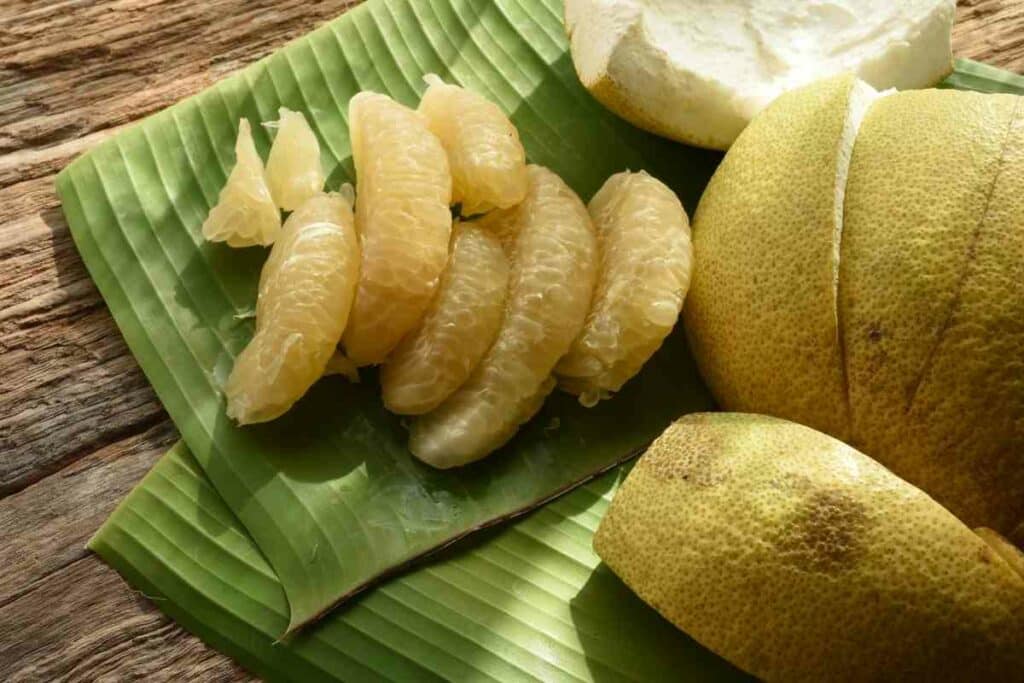
Pomelos are available in many types, cultivated and wild.
Each class has unique bitterness, sweetness, and tartness. However, most pomelos taste like grapefruits.
The most treasured pomelos are tastier than grapefruit. Honey pomelos are the most prevalent pomelo type. They have mild tartness and have a light-yellow skin.
You can consume pomelos like grapefruits. The easiest way is to eat it whole.
Alternatively – You can prepare a fruit salad, marmalade, marinade, and juice. If you have the time, you can harden the fruit into candy.
Avoid consuming pomelos if you’re allergic, as it can trigger hypersensitivity.
Overeating this fruit increases acid levels in the stomach, resulting in GERD symptoms and ulcers. Lastly, eat pomelos in moderation if you have liver or kidney disease.
15. Durian
Durian is a large tropical fruit with a distinctive hard shell.
Beneath the hard skin is a yellow pulp, which can also be green, red, or white.
When you cut the fruit, it gives off an unpleasant odor.
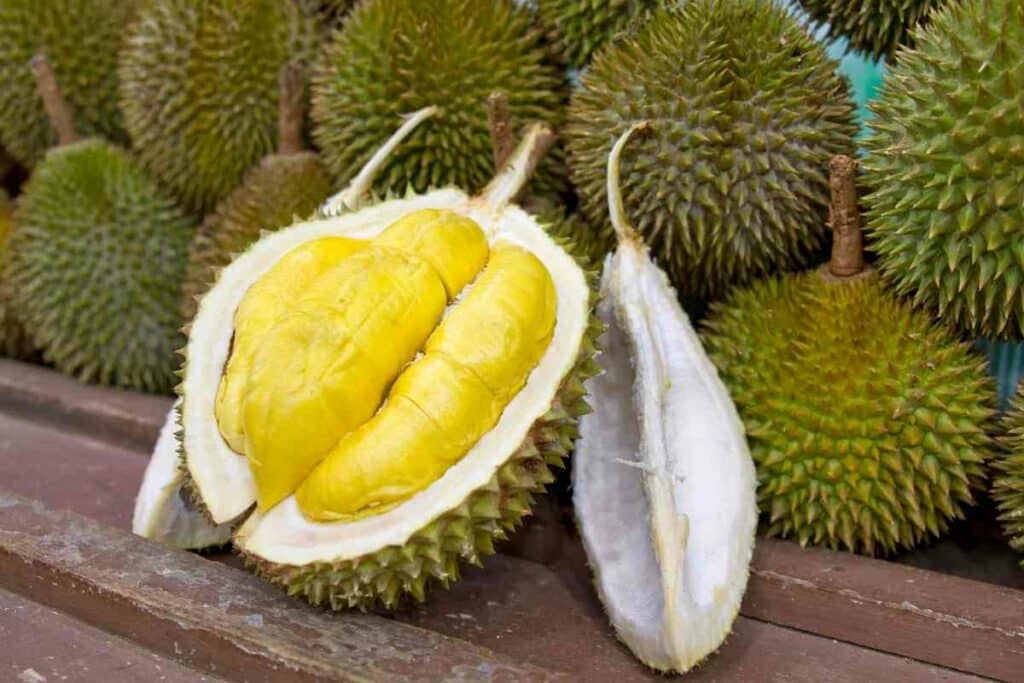
Some people describe durian as the most foul-smelling fruit worldwide. Its scent resembles raw sewage or a rotting carcass.
The smell is so filthy that some countries have active bans against consuming the fruit in public spaces. However, its lovers still vouch for the fruit.
Durians are versatile, as they work for savory and sweet recipes. You can consume the fruit and the seeds. However, you must cook the seeds.
When cooked, durians taste like a mixture of almonds, caramel, cheese, and garlic.
Some health benefits of durian include:
- lowering the risk of chronic illnesses
- improving heart health
- and blood sugar control
However, the research to support these is inconclusive.
Mixing durian with alcohol causes problems. The fruit contains sulfates that inhibit the enzymes that metabolize alcohol, resulting in increased blood alcohol content.
You might experience heart palpitations, nausea, and vomiting.
16. Orange
Despite the name, only a few oranges are orange – most are yellow.
Oranges are the most popular citrus fruit, famed for sweetness, variety, and versatility.

You can eat them whole, use them to make juice and marmalade, or infuse them into pastries for a punchy citrus flavor.
Unlike other fruits, oranges have zero sodium. Instead, they have plenty of potassium. Maintaining a low sodium intake lowers your blood pressure.
On the other hand, a high potassium intake reduces the risk of hypertension by dilating blood vessels.
Therefore, oranges help to regulate blood pressure.
From Experience – Consuming oranges can improve skin health and appearance. Oranges contain vitamin C, which contributes to collagen production. Collagen strengthens the skin and promotes wound healing.
Like lemons, oranges deteriorate once you pick them. It’s best to harvest at their ripeness peak. Afterward, keep them in a cool place away from direct sunlight.
If you have GERD, eat a few orange slices.
Overeating triggers heartburn, regurgitation, and other symptoms since the fruits have high acid concentrations.
17. Star Fruit
Star fruit is a tropical fruit native to India, Indonesia, Malaysia, and the Philippines.
However, it grows worldwide due to its excellent adaptability.
The fruit turns dark green upon maturity. As it ripens, it changes to yellow.

Ripe star fruit is crunchy and juicy, with a sweet, slightly tart taste. Smaller fruits are often tastier than larger ones.
Star fruit contains useful plant compounds, such as epicatechin, Gallic acid, and quercetin.
These are powerful antioxidants that contribute to better physical well-being. Specifically, they prevent some cancer types and improve heart health.
Due to its high oxalate content, star fruit can hurt some people.
For Instance – Eating this fruit can trigger side effects in people with kidney disease. Star fruit toxicity damages the kidney, leading to confusion, seizures, organ failure, and death.
It’s also wise to avoid star fruit if taking certain medications. Like grapefruit, this fruit can affect drug absorption and effectiveness.
18. Canary Melon
Canary melons are large fruits that taste like a blend of cantaloupes and Asian pears.
They’re versatile – you can eat them whole, sliced or add them to salads, shakes, and smoothies.
Interestingly, you can cook Canary melons.
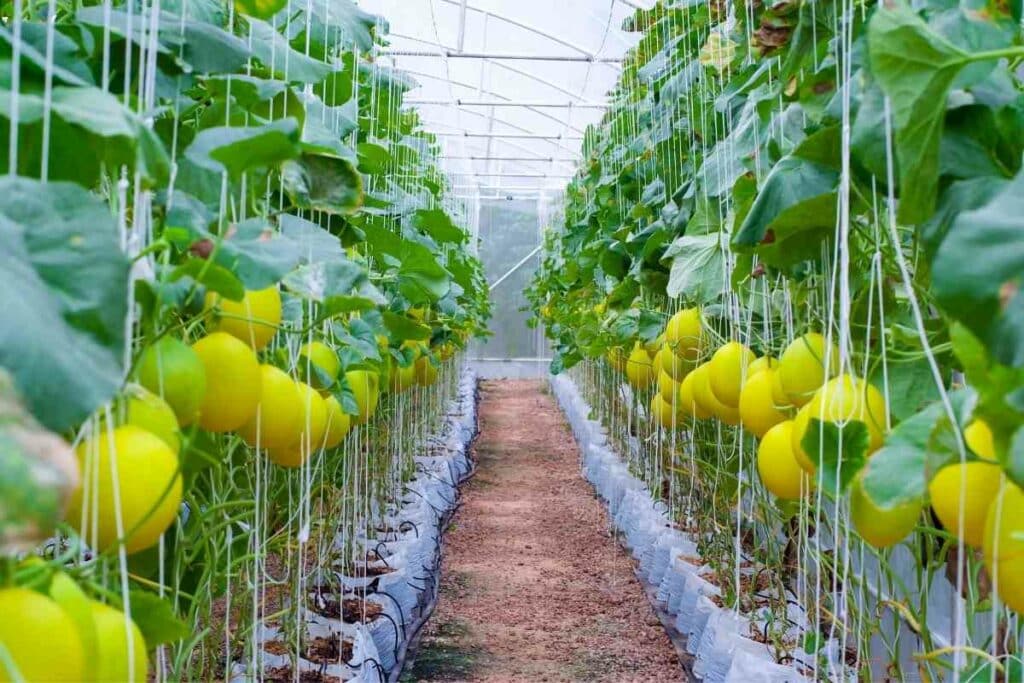
Whether you bake, boil or grill, the high temperatures bring out the natural sugars, resulting in a delicate, mouth-watering flavor.
Additionally, Canary melons have vitamin A, vital for healthy vision.
Vitamin A supports the cornea. It’s also an essential component of rhodopsin, the protein compound that absorbs light signals.
One slice of a large Canary melon provides 50% of the recommended daily vitamin C intake. As such, eating this fruit slows down aging and lowers the risk of heart disease.
Watch Out! Overeating Canary melons causes diarrhea. This is because the fruit contains sorbitol, a sugar that triggers gut problems like bloating, belching, and loose stools.
19. Golden Raspberry
Golden raspberries are rarer than other raspberry types.
However, they are sweeter and sport an attractive pale yellow to gold skin.
Due to their rarity, golden raspberries are more expensive than conventional raspberries.
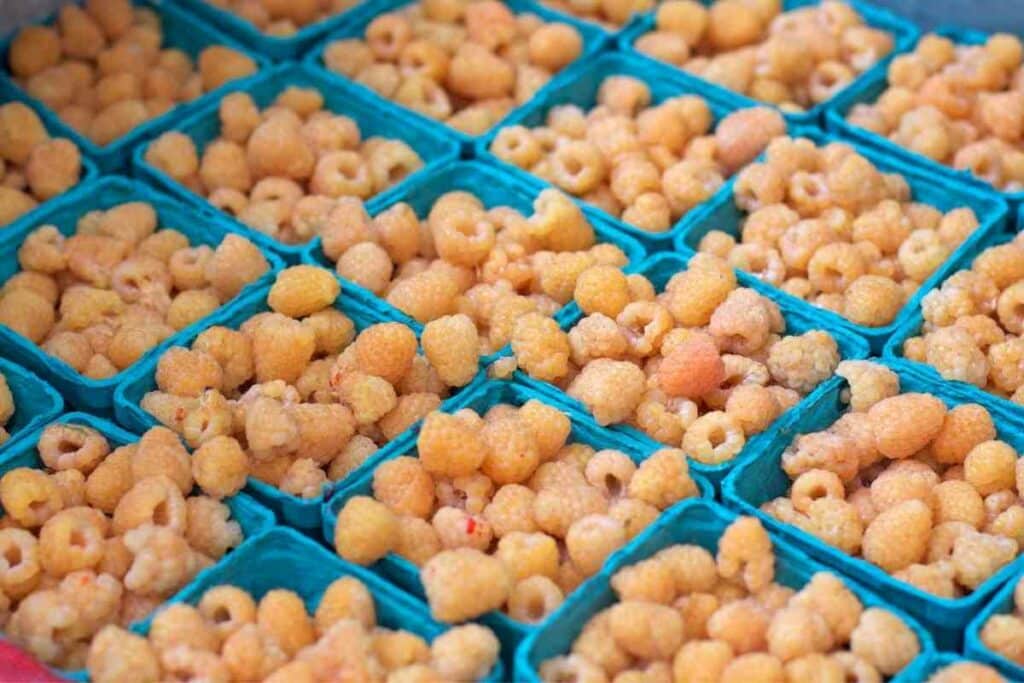
Despite being small, golden raspberries have a high nutritional density.
These tiny fruits have potassium, which improves heart function and regulates blood pressure.
They contain manganese, which regulates blood sugar and promotes bone and skin health. Thirdly, they have omega-3 fatty acids that lower the risk of stroke.
The main problem with raspberries is their susceptibility to farm pests.
As a result, most farmers use pesticides, which can hurt you when consuming the fruit. Always look for organic fruits where possible.
20. Yuzu
Yuzu is an essential ingredient in traditional Japanese cuisine.
You can mistake the citrus fruit for a tangerine.
However, Yuzu isn’t eaten raw – instead, it’s mainly used to enhance the flavor and aroma of traditional Japanese dishes.

High-quality yuzu fruits are yellow, with a few scars and black dots on the skin. When peeled, the fruit produces a refreshing scent.
You can grate the skin and sprinkle it over raw or cooked fish to enhance flavor. Other uses include cooking pasta, making desserts, and sautéing.
Yuzu fruits contain vitamin C, which alleviates gout symptoms. Gout is arthritis caused by uric acid accumulation in the joints.
Vitamin C helps its symptoms by increasing the excretion of uric acid, preventing accumulation.
Moreover, yuzu fruit contains hesperidins and naringin. These compounds prevent platelets from sticking to blood vessel walls.
As a result, you’re less likely to suffer from clots and blood vessel inflammation.
Keep In Mind – Eating citrus fruits like yuzu triggers sensitivity in some people. Although rare, it causes skin rashes, watery eyes, chest tightness, and wheezing. If the symptoms persist, seek medical attention.
21. Yellow Cherry
Most cherry trees produce red and burgundy fruits.
However, scientists have developed yellow cherries through selective breeding. Yellow cherries produce higher yields and adapt to different climates.
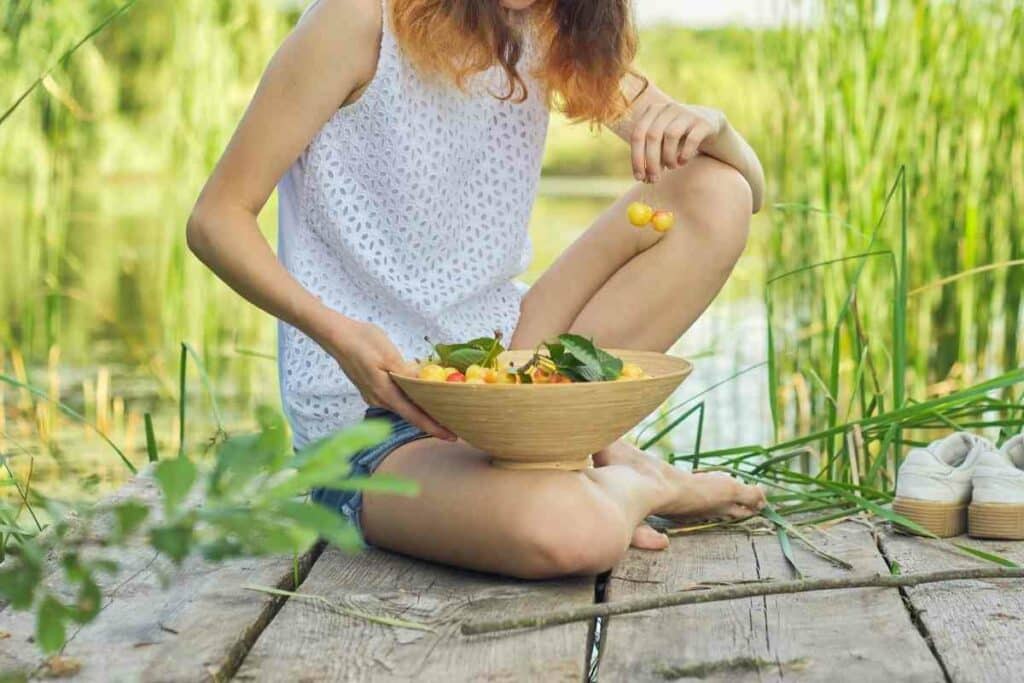
Besides color, yellow cherries are tastier than conventional cherry fruits. More importantly, consuming yellow cherries makes you less likely to experience an allergic reaction.
Eating yellow cherries and their derivatives improves athletic performance and enhances recovery.
This is because they have high levels of vitamin C, a powerful antioxidant that boosts physical health. Also, the melatonin in cherries guarantees better sleep.
Cherries contain salicylates that trigger sensitivity in some people. Salicylate sensitivity symptoms include bloating and diarrhea.
Benefits of Eating Yellow Fruits
Yellow fruits are not only delicious but also packed with numerous health benefits. Here are some of the benefits of incorporating yellow fruits into your diet:
| Benefits | Yellow Fruits |
|---|---|
| Boosts Immune System | Pineapple, Mango, Starfruit, Yellow Watermelon |
| Improves Digestion | Bananas, Papaya, Pineapple, Starfruit |
| Reduces Inflammation | Apricots, Golden Raspberries, Lemons, Pineapple |
| Good for Skin | Apricots, Lemons, Mango, Pineapple, Pomelo |
| Strengthens Bones | Apricots, Lemons, Mango, Pineapple, Pomelo |
| Heart-Healthy | Apricots, Lemons, Mango, Pineapple, Pomelo, Starfruit |
| Regulates Blood Pressure | Bananas, Pineapple, Starfruit |
The antioxidants found in yellow fruits help fight off free radicals, which can cause damage to our cells. Yellow fruits are also high in vitamins A and C, which are essential for maintaining good health.
Additionally, yellow fruits contain fiber and natural sugars that can help regulate blood sugar levels and keep you feeling full and satisfied.
Yellow fruits are also beneficial for those recovering from illness or bone fractures. They can help speed up the healing process and provide the necessary nutrients for a strong immune system.
Incorporating yellow fruits into your diet is a great way to improve your overall health and well-being. So, go ahead and add some of these delicious fruits to your next meal!
| 21 Yellow Fruits |
|---|
| 1. Golden Delicious |
| 2. Golden Raspberries |
| 3. Apricots |
| 4. Pomelo |
| 5. Canary Melon |
| 6. Loquat |
| 7. Lemons |
| 8. Mangoes |
| 9. Pineapples |
| 10. Starfruit |
| 11. Yellow Watermelon |
| 12. Yellow Pear Tomatoes |
| 13. Golden Kiwifruit |
| 14. Papaya |
| 15. Bananas |
| 16. Yellow Apples |
| 17. Yellow Cherries |
| 18. Yellow Figs |
| 19. Yellow Gooseberries |
| 20. Yellow Plums |
| 21. Yellow Raspberries |
List of 21 Yellow Fruits
Yellow fruits are not only delicious but also packed with essential nutrients that are good for your health. Here is a list of 21 yellow fruits that you can enjoy:
Tropical Fruits
Tropical fruits are known for their sweet, juicy flavor and are commonly found in warm climates. Here are some of the most popular yellow tropical fruits:
| Fruit | Description |
|---|---|
| Banana | One of the most popular yellow fruits in the world, bananas are known for their sweet, creamy flavor and soft texture. |
| Mango | A tropical fruit that is sweet and juicy. It is commonly eaten fresh or used in smoothies and desserts. |
| Pineapple | A tropical fruit that is sweet and juicy with a tangy flavor. It is commonly used in salads, smoothies, and desserts. |
| Papaya | A tropical fruit that is sweet and has a soft, buttery texture. It is commonly eaten fresh or used in smoothies and salads. |
Citrus Fruits
Citrus fruits are known for their tangy flavor and high vitamin C content. Here are some of the most popular yellow citrus fruits:
- Lemon
- Lime
- Grapefruit
- Orange
Berries
Berries are known for their sweet flavor and high antioxidant content. Here are some of the most popular yellow berries:
- Golden Raspberries
- Yellow Gooseberries
- Yellow Raspberries
Other Fruits
Here are some other yellow fruits that are not classified as tropical, citrus, or berries:
- Yellow Apples
- Yellow Pears
- Yellow Plums
- Yellow Watermelon
- Yellow Tomatoes
Nutritional Value of Yellow Fruits
Yellow fruits are not only delicious but also nutritious. They are packed with essential vitamins, minerals, and antioxidants that are vital for maintaining good health. Here are some of the key nutrients found in yellow fruits:
| Nutrient | Function | Yellow Fruits High in Nutrient |
|---|---|---|
| Vitamin C | Boosts immune system, promotes healthy skin and tissue | Mango, Pineapple, Lemon, Yellow Bell Pepper |
| Vitamin A | Supports vision, immune system, and skin health | Papaya, Apricot, Yellow Peach, Yellow Apple |
| Potassium | Regulates blood pressure, supports nerve and muscle function | Banana, Yellow Plum, Starfruit, Yellow Watermelon |
| Fiber | Promotes digestive health, lowers cholesterol | Pineapple, Mango, Yellow Plum, Yellow Cherry |
| Carotenoids | Antioxidants that protect against cellular damage | Mango, Yellow Peach, Yellow Nectarine, Yellow Plum |
Yellow fruits are also a good source of natural sugars, which provide energy for the body. However, it’s important to consume them in moderation, especially if you have diabetes or are watching your calorie intake.
Overall, including a variety of yellow fruits in your diet can provide numerous health benefits. They are low in fat and calories, high in fiber, and rich in vitamins and minerals that are essential for optimal health.
List of 21 Yellow Fruits
- Banana
- Pineapple
- Mango
- Lemon
- Yellow Plum
- Yellow Peach
- Yellow Nectarine
- Yellow Cherry
- Yellow Watermelon
- Yellow Apple
- Apricot
- Papaya
- Starfruit
- Yellow Tomato
- Yellow Bell Pepper
- Golden Kiwi
- Passion Fruit
- Yellow Dragon Fruit
- Jackfruit
- Eggfruit
- Durian
Incorporating Yellow Fruits into Your Diet
Yellow fruits are a great addition to a healthy diet. They are packed with vitamins, minerals, and fiber that can help keep you healthy and energized throughout the day. Here are some tips on how to incorporate yellow fruits into your diet:
| Fruit | Description |
|---|---|
| Bananas | One of the most popular yellow fruits, bananas are a great source of potassium and fiber. They can be eaten on their own, added to smoothies, or sliced onto toast. |
| Pineapple | This tropical fruit is rich in vitamin C and bromelain, an enzyme that can aid in digestion. Pineapple can be eaten on its own, added to fruit salads, or grilled for a delicious dessert. |
| Mango | Yellow pears are sweet and juicy fruit that are high in fiber and vitamin C. They can be eaten on their own, sliced onto salads, or baked into a delicious pear tart. |
| Lemons | Lemons are a tart and refreshing fruit that are high in vitamin C. They can be used to flavor water, added to salad dressings, or squeezed onto fish or chicken for a zesty flavor. |
| Yellow Apples | Yellow apples are a crisp and sweet fruit that are high in fiber and vitamin C. They can be eaten on their own, sliced onto salads, or baked into a delicious apple crisp. |
| Yellow Plums | Yellow plums are a juicy and sweet fruit that are high in vitamin C and fiber. They can be eaten on their own, added to fruit salads, or baked into a delicious tart. |
| Yellow Pears | Yellow pears are a sweet and juicy fruit that are high in fiber and vitamin C. They can be eaten on their own, sliced onto salads, or baked into a delicious pear tart. |
| Yellow Watermelon | Yellow watermelon is a sweet and juicy fruit that is high in vitamin C and beta-carotene. It can be eaten on its own, added to fruit salads, or blended into a refreshing smoothie. |
| Golden Raspberries | Golden raspberries are a sweet and tangy fruit that are high in fiber and vitamin C. They can be eaten on their own, added to yogurt, or baked into a delicious raspberry tart. |
| Yuzu | Yuzu is a tart and citrusy fruit that is high in vitamin C. It can be used to flavor marinades, added to salad dressings, or squeezed onto fish or chicken for a zesty flavor. |
| Loquat | Loquat is a sweet and juicy fruit that is high in fiber and vitamin A. It can be eaten on its own, added to fruit salads, or baked into a delicious tart. |
| Yellow Star Fruit | Yellow star fruit is a sweet and tangy fruit that is high in vitamin C and fiber. It can be eaten on its own, added to fruit salads, or used to garnish cocktails. |
Final Words
A colorful setting elevates everybody’s moods and makes mealtime more enjoyable.
You can achieve this by adding a few yellow fruits to your fruit bowl.
Besides beauty and increased appetite, these fruits guarantee better physical and mental health!


